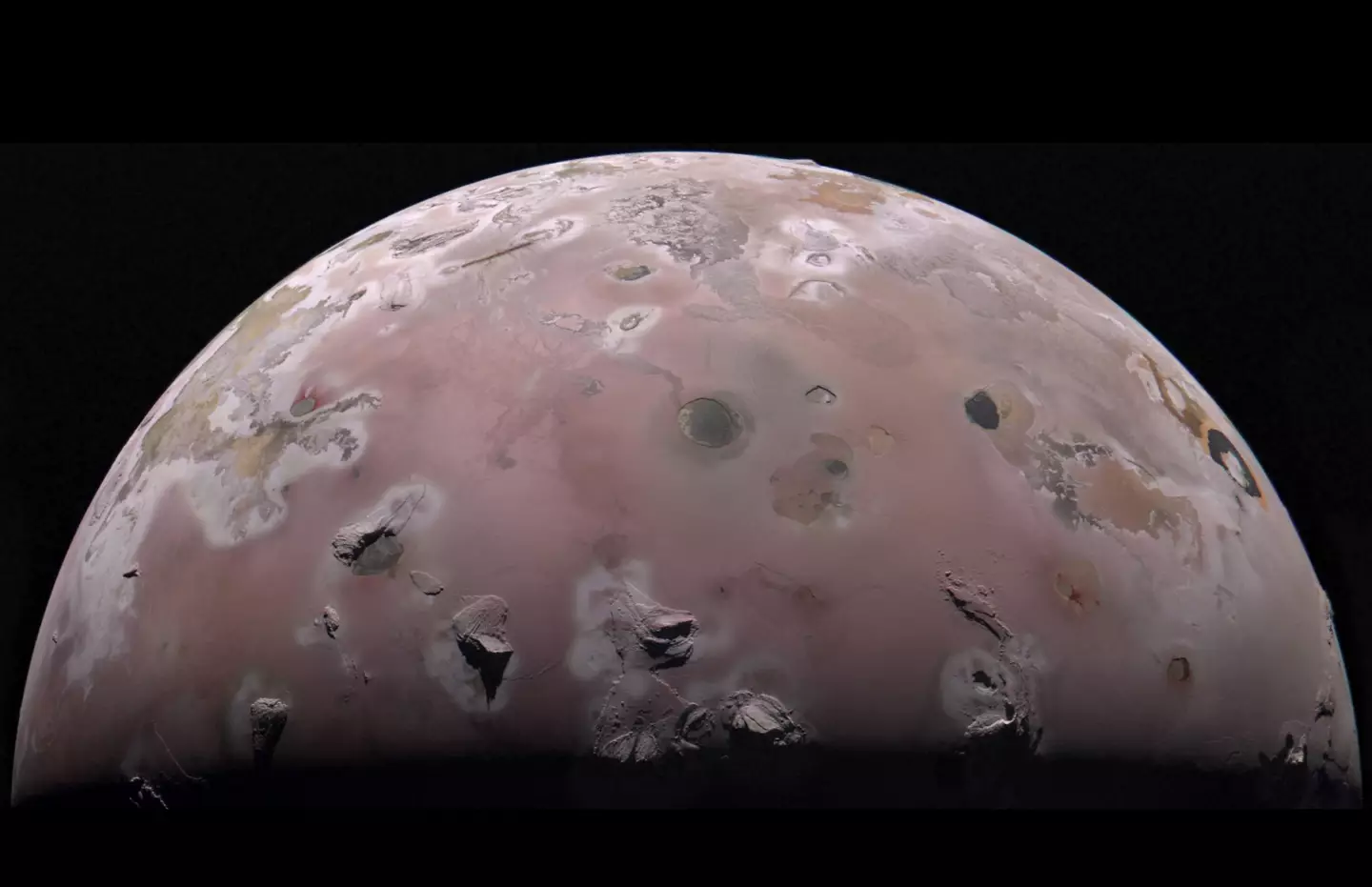
NASA has solved a mystery surrounding Jupiter's moon that's had scientists stumped for almost 50 years.
With our universe measuring up at about 93 billion light-years in diameter, there's a hell of a lot we don't know - and sadly never will - about its very existence.
We've made leaps and bounds in space exploration though - including the Perseverance Mars mission, which has been ticking on for almost four years now.
Advert
With such advanced technology, now more than ever, there are some questions science finally can answer...
Including how and why Jupiter's moon, Io, is the most volcanic world in our solar system.

Io was first discovered in 1610, by Galileo Galilei, along with Jupiter's three other largest moons: Europa, Ganymede and Callisto.
Advert
Around 3,640 km (2,260 miles) in diameter, Io is slightly bigger than Earth's Moon and is home to some 400 volcanoes.
Its volcanic activity was only just discovered some 45 years ago - which is pretty recent given how long ago the moon was discovered.
It was NASA imaging scientist Linda Morabito who first identified a volcanic plume in an image from the agency’s Voyager 1 spacecraft in 1979.
Scientists had never been sure what was fueling Io's extreme volcanic activity, with many believing a 'shallow ocean of white-hot magma' was responsible.
But the US space agency's Juno mission to Jupiter revealed that the volcanoes on Io are 'each likely powered by their own chamber of roiling hot magma rather than an ocean of magma'.
In December 2023 and February 2024, the Juno spacecraft made extremely close flybys of Io to track its gravity.
Advert
Io's elliptical orbit takes 42.5 hours, and Juno found that as the distance varies, so does Jupiter’s gravitational pull.
This leads to the moon being constantly squeezed like a stress ball, resulting in an 'extreme case' of tidal flexing, where friction from tidal forces generate internal heat.

Juno principal investigator Scott Bolton explained: “This constant flexing creates immense energy [in the form of heat,] which literally melts portions of Io's interior.”
Advert
On the previous 'magma ocean' theory, he said: “If Io has a global magma ocean, we knew the signature of its tidal deformation would be much larger than a more rigid, mostly solid interior.”
Meanwhile Ryan Park, Juno co-investigator, said the discovery of tidal forces not always creating global magma oceans 'does more than prompt us to rethink what we know about Io's interior'.
He added: “It has implications for our understanding of other moons, such as Enceladus and Europa, and even exoplanets and super-Earths.
“Our new findings provide an opportunity to rethink what we know about planetary formation and evolution.”
Topics: NASA, Science, Space, Moon, Technology